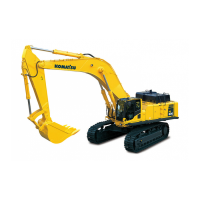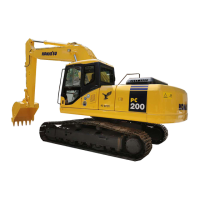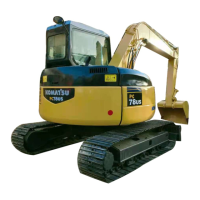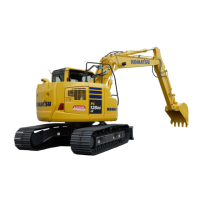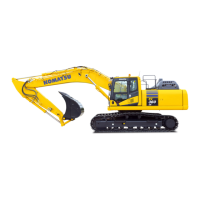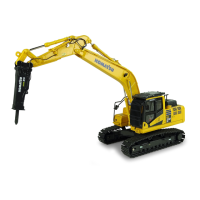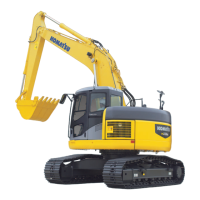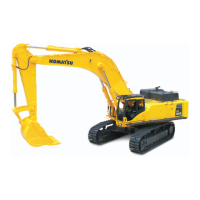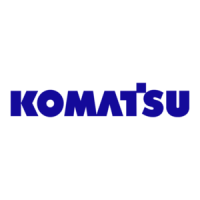
Do you have a question about the Komatsu ecot3 WA500-6 and is the answer not in the manual?
| Brand | Komatsu |
|---|---|
| Model | ecot3 WA500-6 |
| Category | Excavators |
| Language | English |
Details the contents and structure of the shop manual, including Form Numbers for each section.
Provides machine specifications and technical data, including dimension drawings and weight tables.
Lists standard service values for judging machine condition and performance during testing and adjustment.
General procedures and precautions for disassembling and assembling machine components.
Instructions on how to navigate and understand the content of the shop manual.
Lists the types of coating materials used during assembly procedures.
Lists specialized tools required for disassembly and assembly tasks.
Visual representations of the special tools mentioned in the list.
Provides hydraulic circuit diagrams and related drawings for the machine.
Provides electrical circuit diagrams and related drawings for the machine.
Contains preliminary information, safety notices, and guidance on reading the shop manual.
Highlights critical safety precautions for machine operation and maintenance.
Outlines general safety rules and best practices for working with the machine.
Lists key safety points to observe during work and operation.
Guidelines to follow while performing work to ensure safety and prevent damage.
Safety guidelines for operating mobile cranes during machine maintenance.
Safety measures for handling air conditioner hoses and tubes during disconnection/connection.
Explains the structure and sections of the shop manual for better understanding.
Instructions on how to organize and file the shop manual brochures correctly.
Explains the meaning of various symbols used in the manual for safety and quality indications.
Details the units of measurement used in the manual, including SI and Gravitational systems.
Defines standard size and tolerance for parts, explaining their significance in maintenance.
Explains standard clearance and standard values for new parts and their use in repairs.
Defines standard interference and its measurement for shaft and hole fitting.
Defines repair limits and allowable values for parts worn beyond specified limits.
Key considerations for safely handling electrical components and wiring harnesses.
Common failures in wiring harnesses, such as defective contact and crimping issues.
Emphasizes maintaining a clean environment for hydraulic system maintenance to prevent contamination.
Discusses the challenges and recommendations for performing hydraulic maintenance outside a workshop.
Procedures for sealing openings after component removal to prevent dirt ingress.
Precautions for preventing dirt and dust contamination when refilling hydraulic oil.
Describes the process of flushing the hydraulic circuit to remove contaminants after maintenance.
Details using oil cleaning equipment to remove fine particles from hydraulic oil.
Instructions for disconnecting slide lock type connectors used on engines.
Instructions for disconnecting pull lock type connectors used on engines.
Explains the classification of electric wires by type, symbol, and material used.
Relates circuit types to specific wire color codes for identification.
Safety measures to take before and during the removal of machine components.
Steps to take after completing maintenance or repair operations, including refilling and checks.
Methods for checking the muffler's operational sound and performance.
Instructions for disconnecting and connecting Type 1 push-pull hydraulic couplers.
Provides a table of recommended tightening torques for various bolts and nuts.


